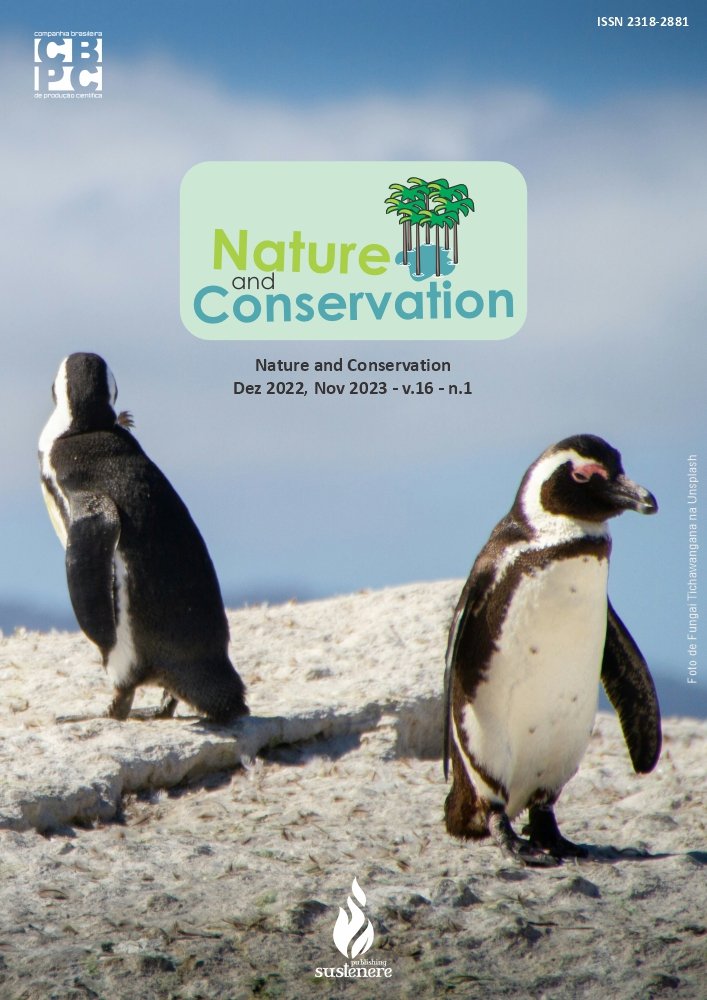Water quality in areas influenced by a sewage treatment plant in the Amazon
DOI:
https://doi.org/10.6008/CBPC2179-6858.2021.009.0012Keywords:
Effluent, CONAMA, Water body, ParametersAbstract
The Sewage Treatment Station - ETE, located in the Amazon region, in the State of Pará, was built to improve the region's sanitation system, which uses the water body to release its treated effluent. Therefore, the evaluation of the influence of the ETE-Mapirí effluent discharge on the water quality of the water body becomes essential to determine the concentrations of the physicochemical and microbiological parameters of the receiving body, comparing them with Resolution 357/05 of CONAMA. To this end, three campaigns were carried out, two during the dry season and one during the flood period, with four sampling points being selected, P1 (spring), P2 (Outlet), P3 (Lago do Papucu) and P4 (Foz), establishing the P2 as upstream and P3 downstream in relation to the effluent discharge point. Additionally, forms were used for each point with registration filling in with its own identification code. Then, the samples were collected in chemically inert glass and plastic bottles with a perfect seal and stored in a Styrofoam with ice to refrigerate them, following the guidelines of the National Guide for Sample Collection and Preservation. In addition, after the collections, the samples were sent to a laboratory which uses the methodology of the Standard Methods for the Examination of Water and Wastewater, the analyzes of the parameters of dissolved oxygen, conductivity, total dissolved solids, temperature, color, aluminum were performed , residual chlorine, iron, manganese, sulfate, sulfide, zinc, nitrite nitrite, ammonia nitrogen, fluoride phenols, total coliforms and E.Coli. Continuously, after the analyses, the concentrations of all points were compared with Resolution 357/05 of CONAMA, point P1 was used as background, as it is the closest to the source. In comparison with Resolution 357/05, points P2, P3 and P4 presented concentrations of color, dissolved oxygen, iron, aluminum, manganese, residual chlorine, phenols and sulfide in disagreement with the Resolution. It is concluded that the ETE Mapirí does not influence the physicochemical and microbiological parameters of the receiving body, as even if the concentrations at points P2, P4 and P5 are above Resolution 357/05, when comparing the Amount (P2) values and Downstream (P3), the values upstream are higher, that is, there is a greater influence on the water body before the release of effluent, which has anthropogenic interference, such as the release of in natura sewage.
Downloads
Downloads
Published
Issue
Section
License
Copyright (c) 2021 Ibero-American Journal of Environmental Sciences

This work is licensed under a Creative Commons Attribution-NonCommercial-NoDerivatives 4.0 International License.
The CBPC - Companhia Brasileira de Produção Científica (Brazil CNPJ: 11.221.422/0001-03) the material rights of the published works. The rights relate to the publication of the work anywhere in the world, including rights to renewals, expansions and dissemination of the contribution, as well as other subsidiary rights. All electronically published works may subsequently be published in printed collections under the coordination of this company and / or its partners. The authors preserve the copyright, but are not allowed to publish the contribution in another medium, printed or digital, in Portuguese or in translation.









